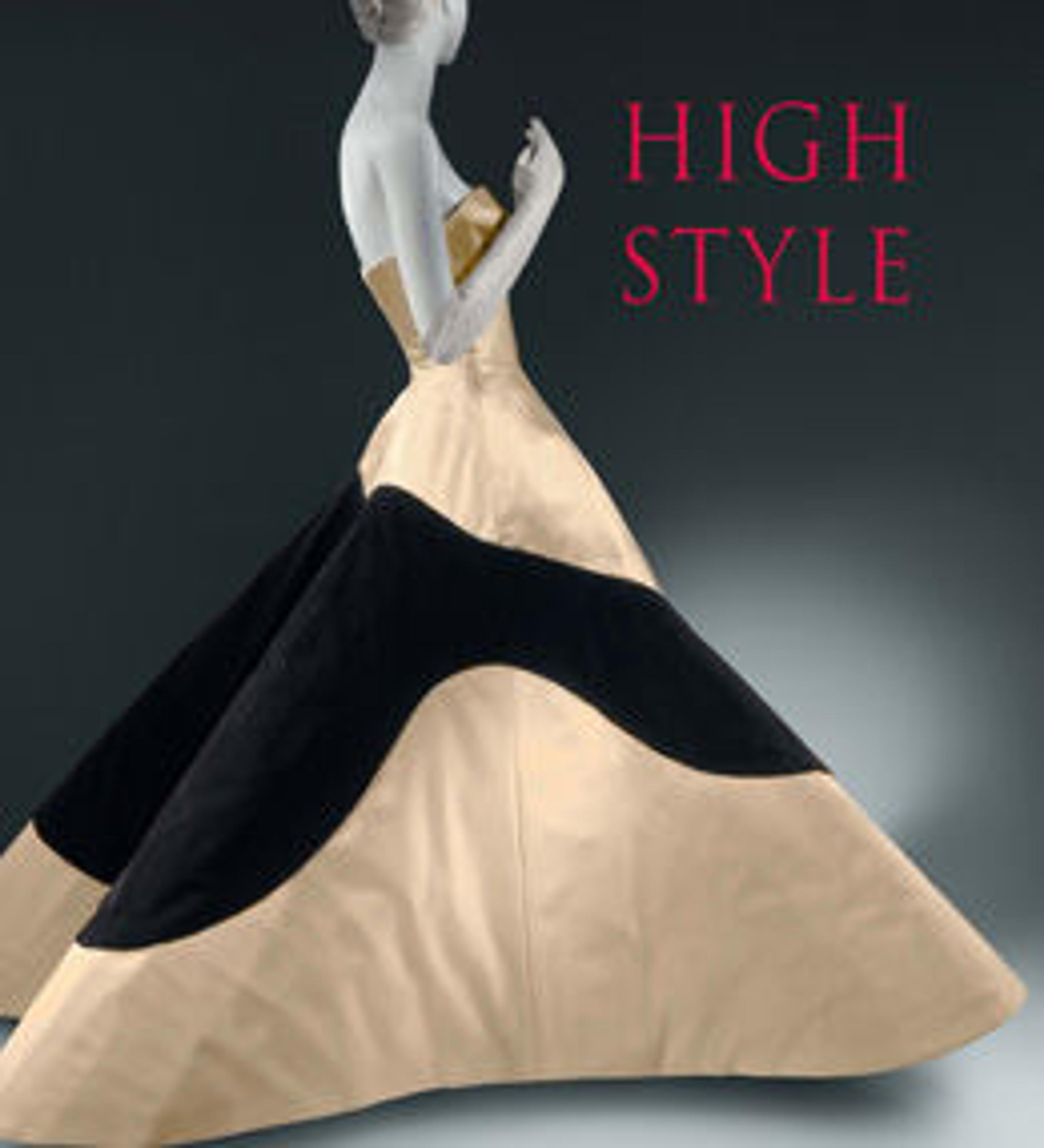Dress
Madame Eta Hentz was born in Budapest and educated at the Hungarian Royal State Academy of Industrial Arts. During the 1920s she was involved in a business partnership with Maurice Rentner for a company called Ren-Eta. Then in the late 1930s, she started her own company with Ann Sadowsky. She is most known for her Grecian themed collection of 1943. Some of her other collections, all well designed, were based on Cape Cod (1944) and the Middle Ages (winter 1945). Her clothes were thought to be flattering, especially for matronly figures and were readily available on a ready-to-wear basis.
With the war restrictions on fabric usage during the 1940s, designers became very inventive, using every bit of yardage and leaving no waste. The silhouette was more streamlined due to this fact, which is exemplified by this chic, fitted day dress. The graphic use of black and white is quite eye-catching and the overall refinement of this dress represents the high quality and inventiveness found in American ready-to-wear.
With the war restrictions on fabric usage during the 1940s, designers became very inventive, using every bit of yardage and leaving no waste. The silhouette was more streamlined due to this fact, which is exemplified by this chic, fitted day dress. The graphic use of black and white is quite eye-catching and the overall refinement of this dress represents the high quality and inventiveness found in American ready-to-wear.
Artwork Details
- Title:Dress
- Designer:Madame Eta Hentz (American, born Hungary, 1895–1986)
- Date:spring/summer 1944
- Culture:American
- Medium:rayon
- Credit Line:Brooklyn Museum Costume Collection at The Metropolitan Museum of Art, Gift of the Brooklyn Museum, 2009; Gift of Madame Eta Hentz, 1946
- Object Number:2009.300.118a–c
- Curatorial Department: The Costume Institute
More Artwork
Research Resources
The Met provides unparalleled resources for research and welcomes an international community of students and scholars. The Met's Open Access API is where creators and researchers can connect to the The Met collection. Open Access data and public domain images are available for unrestricted commercial and noncommercial use without permission or fee.
To request images under copyright and other restrictions, please use this Image Request form.
Feedback
We continue to research and examine historical and cultural context for objects in The Met collection. If you have comments or questions about this object record, please contact us using the form below. The Museum looks forward to receiving your comments.
